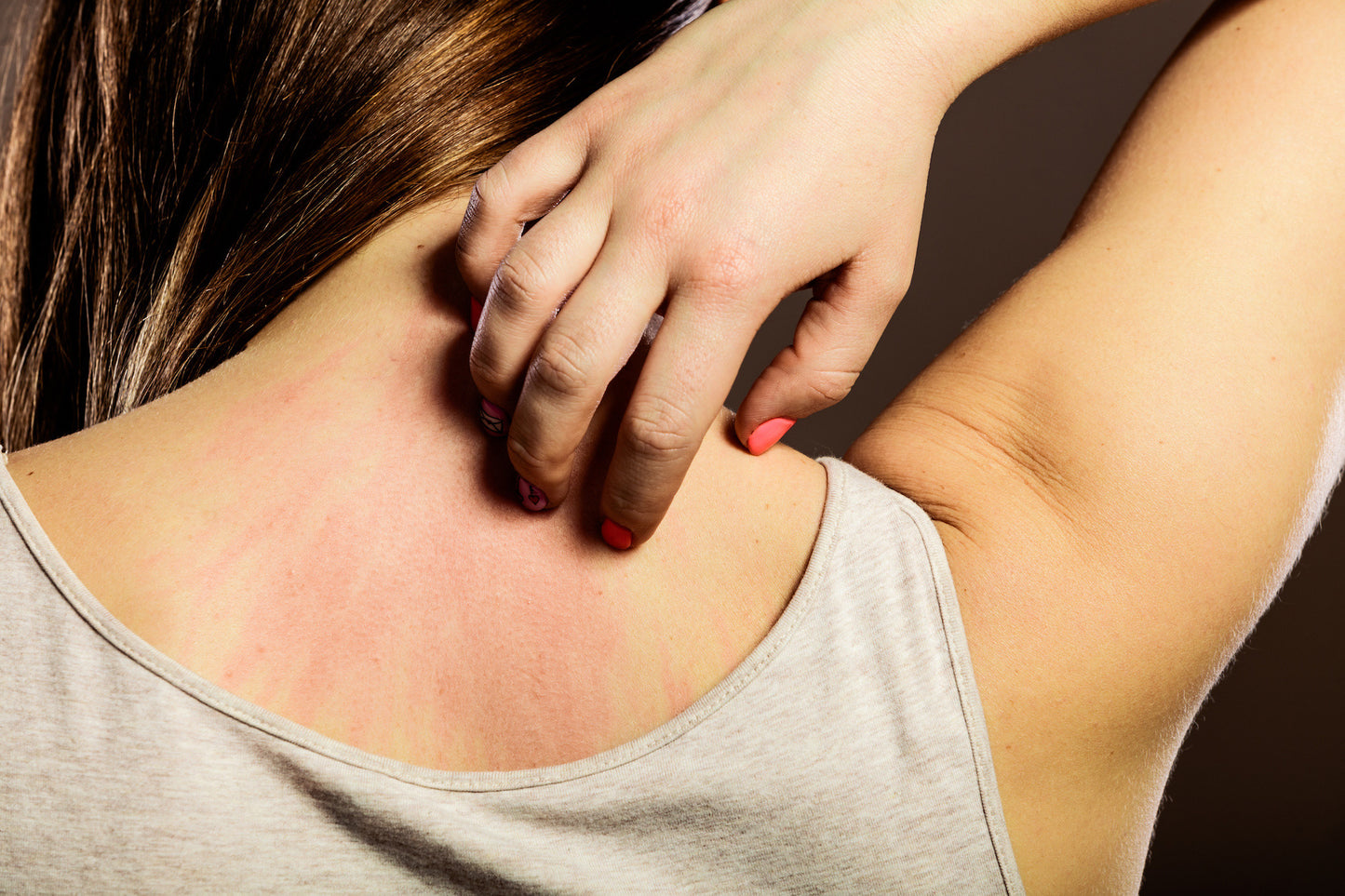

Most people know you can prevent sunburn by wearing a hat, carrying an umbrella, and wearing sunscreen, but there are other summer skin irritations you need to prepare for.
There are a few specific types of skin irritation that pop up in the summer, and we're letting you know how you can prevent or treat them.

One of the most common skin problems during summer is sunburn. The ultraviolet rays of the sun are unforgiving and can cause freckles, sunspots and potentially even skin cancer. Inflammation and a plethora of skin irritations are a common summer occurrence. Most people know you can prevent sunburn by wearing a hat, carrying an umbrella, and wearing sunscreen, but there are other summer skin irritations you need to prepare for.
There are a few specific types of skin irritation that pop up in the summer, and we're letting you know how you can prevent or treat them.
- One of the most common skin irritations is caused by yeast infection. Known as tinea versicolor, the infection is very common in humid places. The symptoms include scaly patches on your neck, chest and back. These patches might also appear tanner than the rest of your skin. The human body is exposed to yeast in a myriad ways and the moisture and sweat that come along with summer allow it to thrive. You can prevent yeast infection or tinea versicolor with impeccable hygiene. Don’t allow sweat to sit on your body for a long time and dry. Shower twice a day, and try to rinse your sweat off quickly after exercising or any type of physical activity. If you want even more prevention, there are special soaps containing pyrithione zinc that can help you stay away from yeast infections.
- Poison rash, or contact dermatitis, is another common skin condition. Coming into contact with poison oak or poison ivy is the main cause of this annoying and potentially dangerous summer skin irritation. While the itchiness and the varying degree of redness may just seem like an allergic reaction, it can get worse. You could get blisters and flaking, or even break out in hives. Avoiding places where you could come in contact with poison oak, lavender, wild daffodils and other such allergens is the best way to prevent contact dermatitis. If you're hiking through an area that may have these pesky culprits, be sure to cover up your skin with long clothing.

- Bug bites are another all-too-common skin problem during summer. Not only are they itchy and annoying, but serious bug bites can cause Lyme disease. You should use bug repellants in your home and on your body, especially when you are outdoors, having a picnic or camping. Citronella candles are also good to have on hand for your patio or outdoor spaces.

- Bacterial infections are very common in the summer months. You may suffer from folliculitis, which give your skin a burning, itching sensations. It sometimes leads to unpleasant pustules on your skin, around your shoulders or on your thighs. You should wear clothes made of breathable fabric and also maintain impeccable hygiene to prevent folliculitis. Also, using antibacterial soaps and shampoos will help cut down your chances of picking up this summer skin infection.
- Molluscum virus is another threat during summer, especially among children. The infection is characterized by tan bumps on different parts of the body. The virus is found in abundance in pools that use chlorinated water. To avoid this virus, limit your exposure to chlorinated pools, or ensure that the pools have been cleansed and are free from molluscum.




